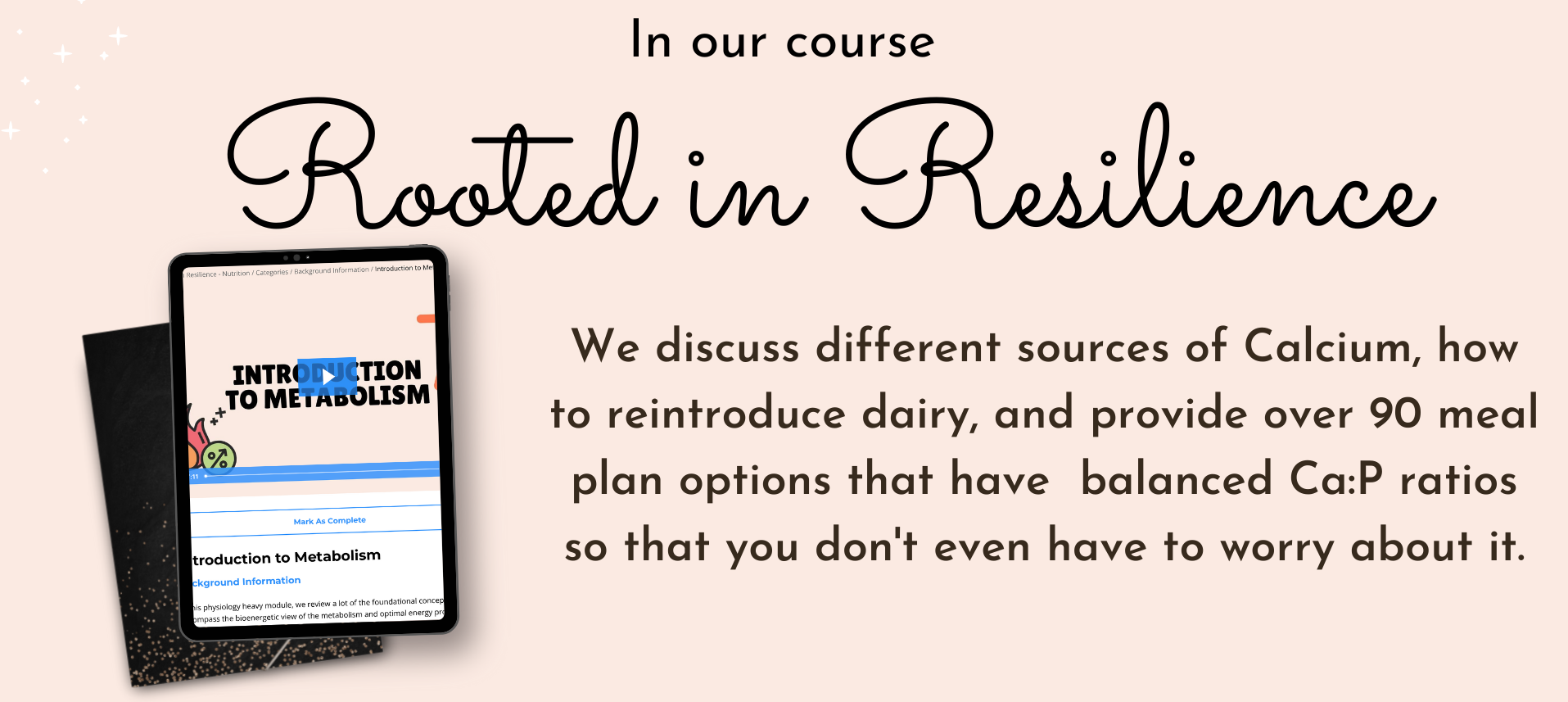You likely don't consume enough calcium
Dec 15, 2022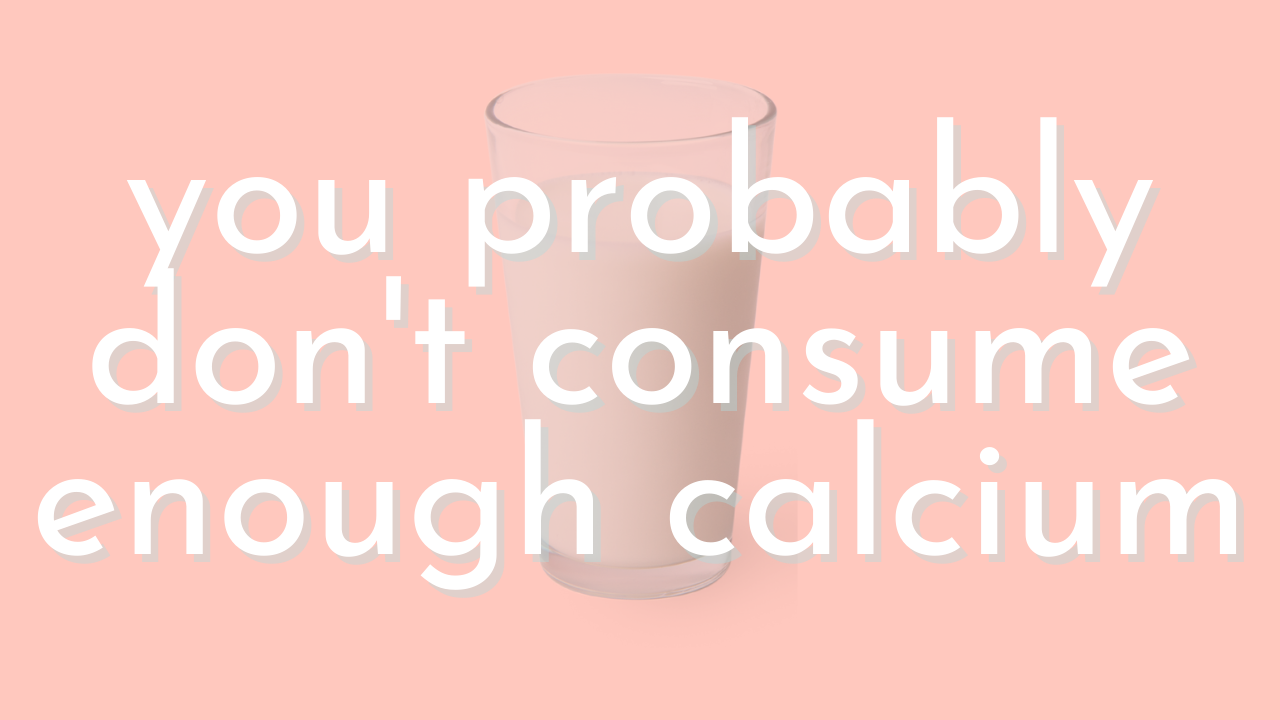
I personally believe most people would benefit by consuming more calcium in their diets. In this blog post I dive into WHY that's the case!
One of the biggest lessons along our health journey is that health is likely not found in the extremes, and that finding balance is not only more sustainable, but also more health promoting.

This applies to exercise: balancing working out and providing your muscles with an effective stimulus to elicit change, with enough recovery, rest and relaxation.
And to food choices, like macronutrients (for ex: balancing protein with enough carbs) and micronutrients (like mineral balance).
Today I want to briefly touch on why we should consider balancing dietary calcium and phosphorous for optimal long term health.
From our own experience, working with clients, and course students, most people have very imbalanced calcium to phosphorous ratios. Meaning, they consume very high levels of phosphorous, and low levels of calcium.
Especially now that 'dairy free' is all the rage and is promoted as 'healthy'.
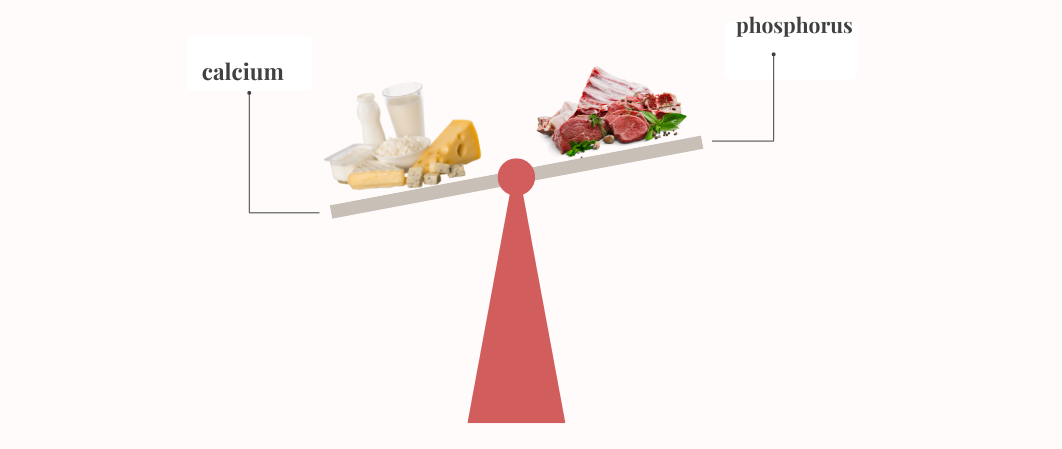
It is very easy to get phosphorous in Western diets, as phosphorous is high in meat, grains, and beans. Plus, inorganic phosphorous is high in a lot of preservatives and packaged food (which has a 100% absorption rate (ref)). And so many individuals eat packaged food daily!
This does *not* make meat and grains 'bad' foods (y'all know we love our meat! And enjoy sourdough bread on occasion). But we believe these phosphorous-rich foods should be balanced with sufficient dietary calcium. Ideally the Ca:P ratio is close to 1 or above (Ca:P >= 1).
On one extreme, the Carnivore diet, which is an all meat diet, the calcium to phosphorous ratio (Ca:P) is very imbalanced, as meat is a phosphorous rich food. On the other extreme, a grain-based diet, the Ca:P ratio is again very imbalanced as grains are another phosphorous rich food.
Then, searching through more of the 'mainstream' (where dairy is 'bad'), I searched 'dairy free meal plan' on google and the first thing that came up was this '1,200 Dairy Free' meal plan from a popular website, EatingWell. I have so many issues with this meal plan (such as - no one should be eating 1,200 calories).
But after inserting all the meal ingredients into Cronometer to calculate the Ca:P ratio, Ca:P = 0.3:1, and the total calcium content was just 600 mg!
Most people are *not* consuming enough calcium, and have imbalanced Ca:P ratios.

Calcium gets a lot of bad rep these days, and some fear eating too much of it due to the fear of calcification (a buildup of hardened calcium deposits in tissues that can interfere with function).
But dietary calcium is not the cause of calcification. Instead, low dietary calcium can be one of the contributing factors.
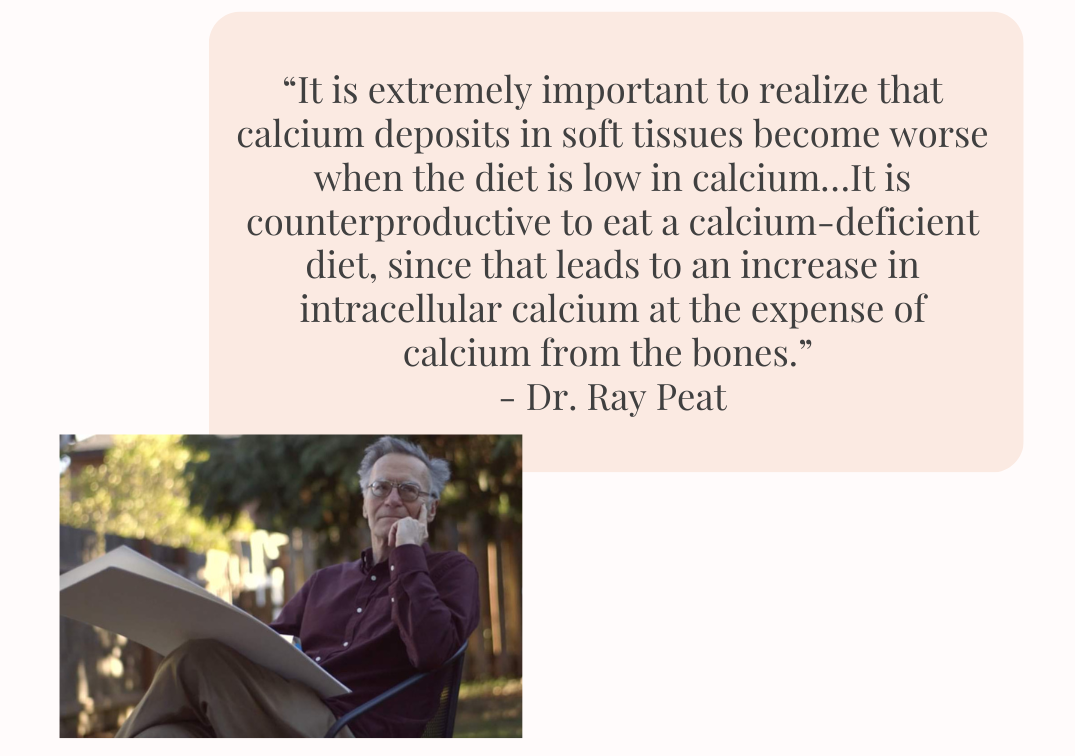
Calcium is so vital for proper function that the body tightly regulates the blood calcium concentration.
With inadequate dietary calcium to satisfy the body's calcium needs, the parathyroid glands release parathyroid hormone (PTH) into the blood to bring calcium level back up to normal by yes, increasing calcium absorption from our food, but also by dissolving calcium from the teeth and bones.
When we don't consume enough dietarily, calcium gets mined from our skeleton.
When PTH is elevated, we are in a systemic, pro-inflammatory state that can accelerate the degenerative aging process. (ref)
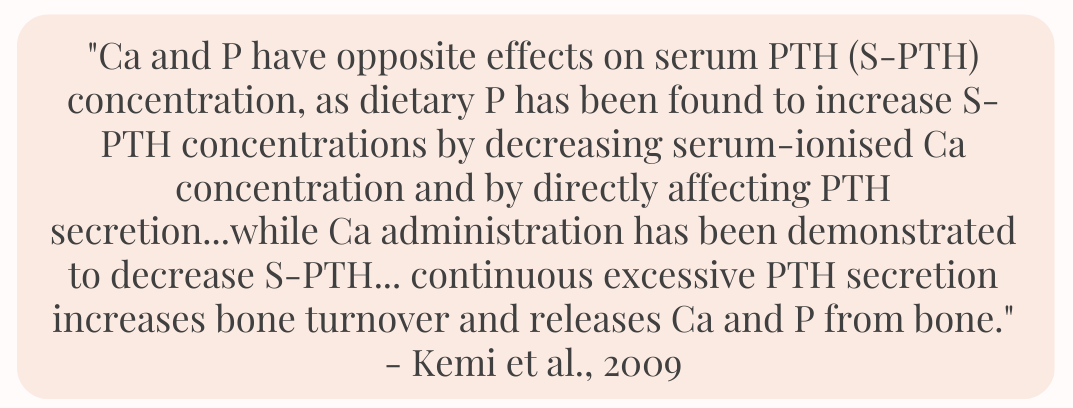
While there is plenty of literature documenting the human health benefits of a Ca:P ratio >= 1 (ref), it is not discussed in mainstream or many 'alternative' health communities.
However, it is well known, often discussed and well documented that this Ca:P ratio should remain balanced for other animals such as
The 'Nutrient Requirements of Dogs and Cats' (ref) published textbook recommends a Ca:P ratio of 1.2:1. And the Merck Vet Manual recommends a 1.2-1.5:1 for dairy goats (ref).

We personally saw an improvement with oral health after reversing out of a carnivore diet (very high in phosphorous and usually low in calcium). We not only re-added carbs, but we also added in dairy over time to ensure a Ca:P ratio > 1.
During carnivore (& 'dairy free' keto) days, we would both develop hard plaque (aka tartar or calculus) on the inside of our bottom row of teeth. And we would pluck this off our teeth, daily.
Looking back, this was a clear sign that our body was borrowing calcium from the skeleton to maintain calcium homeostasis since we didn't consume enough dietarily to balance all of that phosphorous. The calcium was 'mined' and then released into our saliva. And guess where saliva pools in our mouths? Right on the back side of your front, bottom teeth.
With a balanced Ca:P intake, we no longer get that plaque build up!
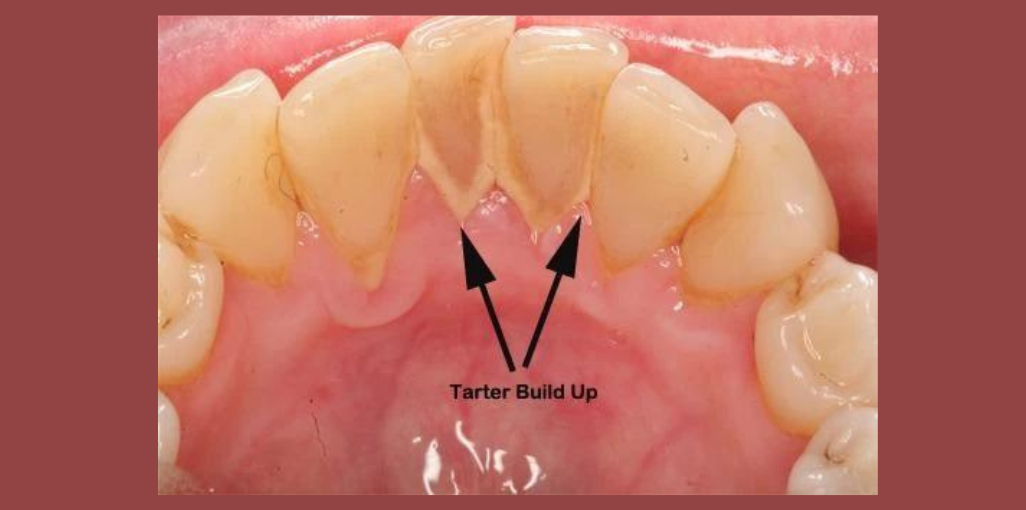
These type of dietary changes won't necessarily be 'felt' in the short term. But they can have profound implications on long term health.
And please don't let this overwhelm you!
There are very simple solutions to regaining Ca:P balance.
Here are our top tips:
- Track a typical day of eating in a food tracking app such as Cronometer. The app will tell you your total phosphorous and calcium intake. Divide your total Calcium by your total Phosphorous to get your Ca:P ratio. Ideally this ratio is close to or slightly above 1.
- You may be eating too much meat! Not because of saturated fat. Not because of cholesterol. But meat is a phosphorous rich food, and we believe it should be balanced with sufficient dietary calcium. So, it can be beneficial to swap some of your meat intake for some dairy to still ensure you eat enough protein while maintaining a balanced Ca:P ratio.
It's not about avoiding foods that are higher in phosphorous. It's about including foods higher in calcium to make the overall ratio in balance.
- Currently can't tolerate dairy? There are other ways to boost your calcium intake! Our favorites are homemade egg shell powder (here is a link to how we make it) or bone meal powder from 100% grass-fed cows (one option is the Heart & Soil Bone Matrix supplement, STRONG10 to save 10%!)

I understand that this can get overwhelming. If you are looking for additional information on the Ca:P ratio, calcium rich foods, and how to make sure these minerals remain in balance, check out our course!
In the Nutrition section of our course, Rooted in Resilience, we include over 90 meal plan options, all of which contain balanced Ca:P ratios!
We also include an entire module on Calcium, the Ca:P ratio, and tips to reintroducing dairy.
Of course, it's never one thing. Calcium is not the only nutrient that works to suppress the anti-metabolic parathyroid hormone (PTH). We also need adequate levels of magnesium and Vitamin D (25-D). All of these work in concert to keep the PTH levels in check.
It can be overwhelming, but it doesn’t have to be complicated.
Eating real, whole foods, tuning into cravings, and providing adequate fuel is a pretty fool proof formula for taking back one’s health.

